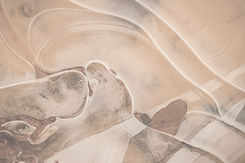
Projects
Global Studies Capstone: Reviewing ethics in museums, studying international art laws, and repatriating artifacts
For my Global Studies capstone, I will be examining various museums, specifically in the Western world, and questioning the morality and ethics of certain exhibits. I'll be looking at specific artifacts from colonized countries and whether they should really be in that museum, and if they should be returned or not, along with the controversies that come with the issue of repatriation. The product will consist of a few different pieces and their importance/impact, along with a dissertation on international art laws. See the pieces below.
Of these pieces, the paper will discuss the Koh-i-Noor diamond, the Benin Bronzes, and the Bust of Nefertiti. To read the full paper, click here.
Title: Repatriating History: Should Museums be Required to Return Stolen Artwork and Artifacts?
Thesis: Repatriation also has political and legal impacts, and should be viewed as a peoples’ contemporary encounters with historical colonization and its present-day consequences. Therefore, it can be reasonably inferred that repatriation holds more significance to colonized countries than to historically colonizer countries.

Benin bronzes
On February 18th, 1897, British soldiers burned down Benin City, located in present-day Nigeria. Art from civilian homes and royal palaces were looted during the 10 day massacre, and at least 3,000 artifacts were stolen, now know as the Benin Bronzes. The Benin Bronzes were then taken to Britain, with 40% of them sent to the British Museum. The remaining artifacts were sold to private collectors and galleries across Europe and the United States, much of it ending up in the Metropolitan Museum of Art in NY.
Koh-i-noor diamond
The Koh-i-noor diamond, which translates to 'mountain of light' is an infamous diamond thought to bring bad luck upon any man who wears it. Hence, it has only been worn by female members of the British royal family since it was ceded to Queen Victoria in 1849, when Great Britain annexed Punjab. The diamond currently has 66 facets and measured 105.6 carats after being recut in 1952, and there is no record of its original weight. It currently adorns the front of Queen Elizabeth The Queen Mother’s Crown, as Great Britain claims to have come upon it legally--admittedly after their imperial takeover. The British government remains ‘unswayed’ that their ownership of the gem is legitimate and refused to even consider its removal from the crown jewels: the collection with which it sits today in the Tower of London, displayed to the public.


Elgin marbles
The Elgin Marbles, more aptly named the Parthenon marbles, are named after Thomas Bruce, the seventh Earl of Elgin. They were taken from their country of origin, Greece, and shipped to Scotland to become decorations in his private home. After his divorce, he sold them to the British Museum for less than he originally procured them for. It is so elemental to cultural history that they are returned to their original site that their repatriation has even claimed the attention of UNESCO, though they were unable to broker a deal between the UK and Greece
Bust of Nefertiti
The Bust of Nefertiti, originally crafted by Egypt's Thutmose in the 14th century, was taken from Amara to Berlin, where it was presented to the benefactor of the expedition: James Simon. Though he lent it to the Berlin Museum, it was not displayed for 11 years upon his request. It is currently housed by the Neues Museum in Berlin, though Egypt has been asking for its return since its public debut in 1924, but the Neues Museum has declined to return the artifact.


Rosetta stone
The Rosetta Stone is a granodiorite slab dating to 196 BCE, thought to be one of the most influential Egyptological discoveries in history. It was carved in Memphis, Egypt with inscriptions of the same message in three different languages: Egyptian hieroglyphics, Demotic scripts, and ancient Greek. The stone was discovered in 1799 by a Napoleonic expedition near Rashid (Rosetta) Egypt, before hieroglyphics were decipherable, and were an instant sensation in Europe. When British troops overtook the French regime in 1801, there were many arguments as to why the stone should become the property of France, but it still went to the British museum, where it resides to this day.